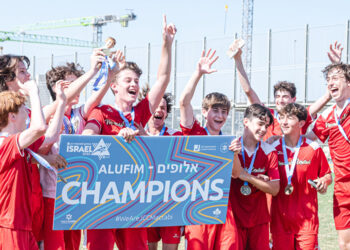Parks and Recreation director, Jason Schaitz, shares tips and guidelines you should have in place during camp planning in recreation.
Planning is the cornerstone of any well-run camp. If you fail to plan you plan to fail. Proper planning prevents poor performance and is extremely important in coordinating any high-level program. Planning can come in many forms and most all plans are open and customizable to how you want to operate.
Below are some tips and guidelines on different plans you should have in place at camp:
Scheduling: Schedule out your program dates at least a year in advance. If you only do a summer camp, it’s easy as summer dates are already set and dictated by your local school district. If you are coordinating programs all year round, you want to have a solid programming plan in place.
Once your schedules are set for the year, communicate it. Create marketing materials, get them on the website and send emails. With your participants busy schedules, they will appreciate getting this information well in advance. Be sure to include “All dates and times subject to change” on all your communication in case unforeseen events force you to make changes.
Activities: Plan your activities out – along with any themes – prior to the start of camp. You don’t have to plan every detail of every activity, but have an idea of the core activities, crafts, etc. pre-planned each week. If you rely on your counselors to constantly come up with activities on the fly, you will end up with too much repetition, down time and lack of creativity. The activity plan is a tool for your counselor’s success when running activities this summer.
Marketing: Marketing plans can come in several forms but at the very least have a calendar or outline on when you want to start to market your programs and what marketing channels you want to use. Narrow your marketing efforts to each of your target markets for more effective marketing and communication.
Budget: Your budget is the planning tool for your finances. Sound budgeting will ensure you only spend what you are able to spend based on your forecasted revenue and expenses. Once your budget is created, stick to it as close as possible and track every expense that comes in to make sure you stay on track.
Staffing: Planning your staffing can come in several forms such as optimizing how much staff you need, recruiting staff and retention. If you are a licensed program in your state you may have certain staffing ratio’s you have to meet. If you are not licensed you should still follow appropriate staff-to-child ratios. Once you know your optimal staffing levels you need to have a plan to recruit and retain them. Turnover can be expensive so once you get good staff in the door you want to retain them.
Training: Training and education is an ongoing process and should be taken seriously. Not just to make sure your staff are great with kids, but also to make sure they know your expectations, policies and procedures – as well as prepare them for emergency situations – and in turn, limit your liability. You don’t have to do all your training in house as there are tons of resources out there to provide staff trainings. Regardless of how you want to do it, have an annual training program in place to make sure you get the most out of your most valuable investment: your staff.
Fundraising: Most camps will rely on some type of fundraising to help subsidize your registration fees and provide enough revenue to keep the doors at camp open. Have a fundraising plan to keep your fundraising goals on track. Make sure to outline your timeline, goals and objectives for each type of fundraising source you are targeting. Be creative with your fundraising to stand out from the crowd and provide unique value for potential sponsors and donors.
Maintenance: Create a maintenance plan that focuses on your preventative maintenance for every aspect of your camps and facilities. A sound preventative maintenance plan will keep your facility aesthetically pleasing, increase the lifespan of your assets, and help you identify how long things are supposed to last and when they need to be replaced.
Risk Management: Regular inspections, having proper insurance and creating emergency action plans are all part of your overall risk management plan. Limiting your liability will prevent a catastrophic incident from closing your doors for good.
Facility Improvements: Facility Improvement Plan and/or Capital Replacement Plans are longer term for your largest and most expensive assets. The plan should outline the lifespan of each asset and the cost of upgrading or replacing it. Once you know how far out it should last and how much it will cost, you need to set up a revenue stream to ensure you have the funding for these items when they come due. Always set aside funds on an annual basis for capital improvements.
All of the above can be put together to form your organization’s business plan and comprehensive strategic plan. Short term planning can take place a year in advance with long term plans going out five to 10 years. Regardless of how long you are planning out, you should always review and adjust your plans on a regular basis. These are fluid documents and as the external and internal climate changes, your plans should adjust.
It is always recommended to have all of your stakeholders involved in the planning process. For example, if you are making an activities and program plan, make sure to involve the staff who will be conducting those activities in the process. Lack of planning will always show so remember, if you put in the extra work up front in planning, it will make your job easier, your operations smoother and your overall camp better in the long run.
For more resources on camp planning, view the Planning Guide and visit The Summer Camp Source website.










